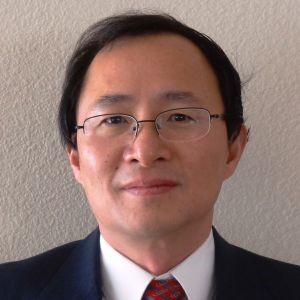Thermodynamic and Transport Properties of Porous Materials for Carbon Dioxide Separation

Three is a great demand for developing effective separation and purification technologies for carbon dioxide (CO2) capture in the context of post-combustion (flue gas, CO2/N2), pre-combustion (shifted synthesis gas stream, CO2/H2) and natural gas upgrading (natural gas clean-up, CO2/CH4). The conventional method for CO2 capture in industry uses amines as selective solvents for CO2 absorption, which is less energy-efficient because the energy associated with CO2 and solvents recovery is very high. Pressure swing adsorption (PSA) using porous adsorbents is widely considered as a more energy-efficient and economical process for CO2 capture. Considerable attention has been given to the development of PSA processes that are mostly based on differences in adsorption equilibrium, and limited efforts were devoted to explore the differences of adsorption kinetics of porous adsorbents for CO2 separation.
In this presentation, we will define a set of selectivity parameters for evaluating and selecting porous materials as suitable adsorbent or membrane candidates for CO2 separation. Examples will be given for separating CO2/CH4 and CO2/N2 gas mixture pairs in a microporous metal-organic framework (MMOF), ordered mesoporous carbons (OMC) and N- or O-doped porous carbons, by combined adsorption equilibrium and kinetic effect. In order to demonstrate the effect of accessible pore size on the kinetic selectivity, we measured diffusion rate of CO2, CH4 and N2 in porous adsorbents with different pore sizes (MOF-177, ~10.8 Å, MOF-5, ~7.7 Å, zeolite 5A, ~4.4 Å, and Cu(hfipbb)(H2hfipbb)0.5 ~3.5 Å). Both the adsorption equilibria and kinetics were measured at 278 K, 298 K and 318 K and pressure up to 800 mmHg. Diffusion time constants of CO2, CH4 and N2 were investigated from the adsorption uptake curves as a function of time by a micropore diffusion model. An overall selectivity of more than 20 was obtained in Cu(hfipbb)(H2hfipbb)0.5. The result shows this MMOF of interest is a promising adsorbent for adsorptive separation of CO2/CH4 mixture. The evaluation method presented in this work can also be applied to optimize the thermodynamic and transport properties of porous materials for other gas separation applications.
Dr. Shuguang Deng joined Arizona State University in August 2015 as a Professor of Chemical Engineering in the School for Engineering of Matter, Transport and Energy. He was the Bob Davis Professor in the Chemical and Materials Engineering Department at New Mexico State University before moving to ASU. Deng received B.S. (1984) and M.S. (1987) from Zhejiang University in China, and Ph.D. (1996) from University of Cincinnati, all in chemical engineering. Deng has 12-year industrial R&D experience with Sinopec (R&D manager, 1987-1992) and BOC (lead research engineer, 1996-2003). Deng’s group is currently working in three areas: 1). Synthesis, characterization and application of porous materials as adsorbents, catalysts and membranes for sustainable energy and clean water; 2). Development of efficient processes for converting biomass to bioenergy and bio-products; 3). Applications of adsorption technology in environmental protection: water treatment, carbon dioxide capture and utilization. Dr. Deng has received several awards in his career, including Fulbright Distinguished Chair in Energy Conservation (Moscow, Russia, 2013); Westhafer Award for Excellence in Research and Creative Activity (2012), University Research Distinguished Career Award (2011), Millionaire Researcher (2010), College of Engineering Distinguished Bromilow Excellence in Research Award (2009); Bob Davis Endowed Professorship (2005), Innovation Excellence Award (BOC, 2001), and Innovation Achievement Award (BOC, 1999). As of August 2016, Dr. Deng has published over 150 referred journal papers (~100 in the last five years), holds 17 patents. His publications have received ~4000 SCI citations (h-index of 34), 6400+ Google Scholar Citations (h-index of 45).